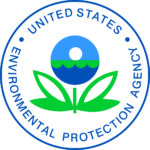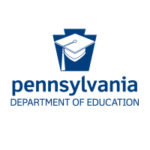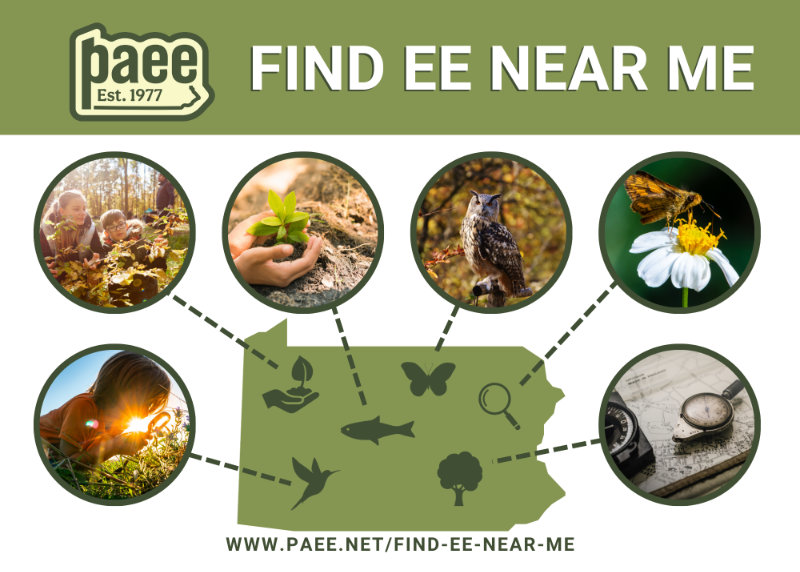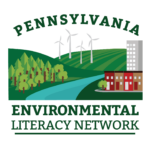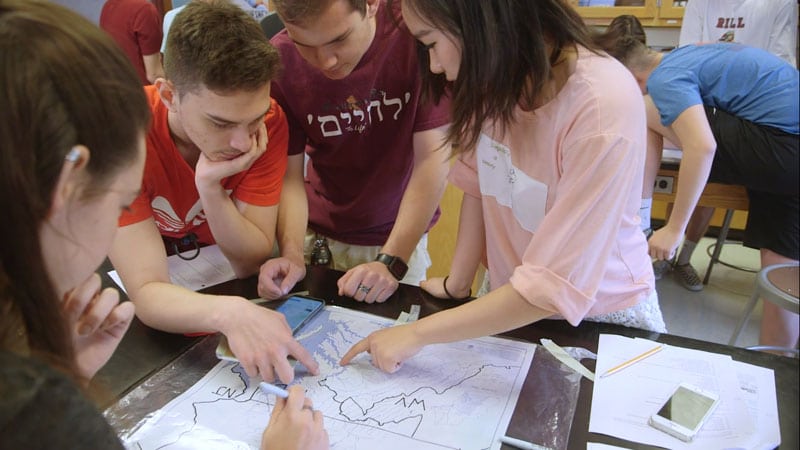
Environmental literacy is a collective product of all the disciplinary literacy pieces we discuss in education. Watershed literacy is an expression of environmental literacy framed within the context of watershed boundaries, making exploration place-based and relatable to both teachers and students.
Achieving environmental literacy combines awareness of issues and phenomena, related content knowledge, problem-solving, and analysis skills from all disciplines, from the arts and humanities to social studies and the sciences, that help us explore all of the earth’s systems.
Environmental Literacy and Environmental Education Defined
“An environmentally literate person is someone who, both individually and together with others, makes informed decisions concerning the environment; is willing to act on these decisions to improve the well-being of other individuals, societies, and the global environment; and participates in civic life. Those who are environmentally literate possess, to varying degrees, the knowledge and understanding of a wide range of environmental concepts, problems, and issues; a set of cognitive and affective dispositions; a set of cognitive skills and abilities; and the appropriate behavioral strategies to apply such knowledge and understanding in order to make sound and effective decisions in a range of environmental contexts.”
Hollweg, K. S., Taylor, J. R., Bybee, R. W., Marcinkowski, T. J., McBeth, W. C., & Zoido, P. (2011). Developing a framework for assessing environmental literacy. Washington, DC: North American Association for Environmental Education.
“Environmental education (EE) is a process that helps individuals, communities, and organizations learn more about the environment and develop skills and understanding about how to address global challenges. It has the power to transform lives and society. It informs and inspires. It influences attitudes. It motivates action.”
North American Association for Environmental Education. (nd). About EE and Why it Matters.
To learn more about the Benefits of Environmental Education for K-12 Students and other great resources, please visit the North American Association for Environmental Education (NAAEE) website. You can join the eePRO network for free!
Statutes and Initiatives
- Commonwealth of Pennsylvania Environmental Education Act of 1993
- Pennsylvania Academic Standards (see Environment and Ecology; Science and Technology)
- Pennsylvania Department of Education Standards Aligned System: Science, Technology & Engineering, Environmental Literacy, and Sustainability (STEELS) Standards Hub
- Chesapeake Watershed Agreement
- NAAEE Guidelines for Excellence: To ensure that your school or organization is following best practices in EE, you can review NAAEE’s Guidelines for Excellence. Developed by diverse teams of professionals, the guidelines series includes Community Engagement, Early Childhood Environmental Education Programs, Nonformal Environmental Education Programs, Environmental Education Materials, K-12 Environmental Education, and Professional Development for Environmental Educators guidelines.
Regional Environmental Literacy Resources
Environmental Literacy Plans
- Environmental Literacy Plan, PACE
- Pennsylvania Environmental Literacy Plan, Pennsylvania Advisory Council
- (TEMPLATE) Pennsylvania Environmental and Sustainability Literacy Planning Tool For LEA/District/School/Building
